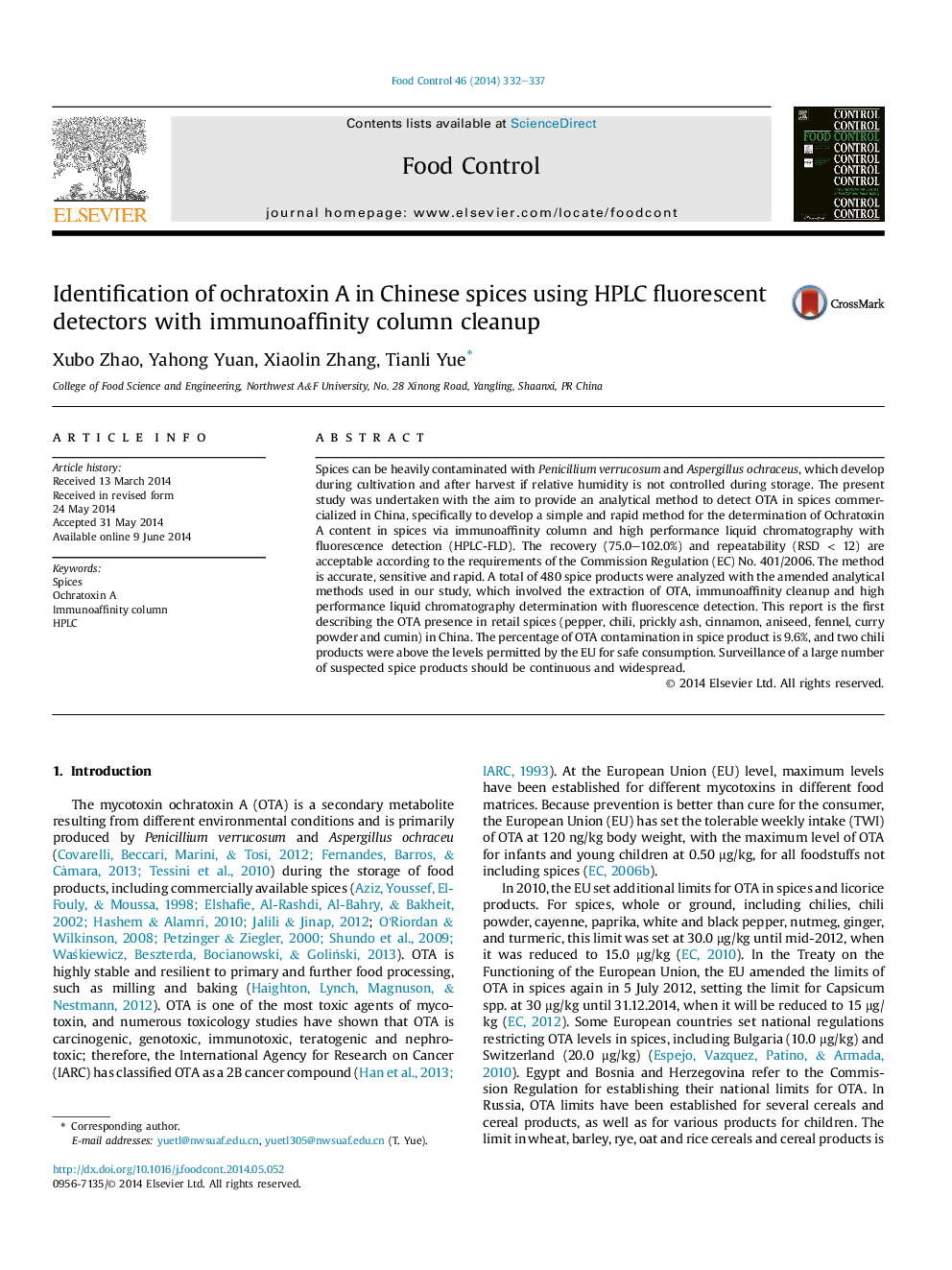| Article ID | Journal | Published Year | Pages | File Type |
|---|---|---|---|---|
| 6391237 | Food Control | 2014 | 6 Pages |
â¢A validated HPLC-FLD method was used to determine OTA in Chinese spices.â¢Systematically studied the spice samples extraction, recovery and precision.â¢Collected the data on OTA in China based on 480 retail samples of various spices.â¢About 9.6% of the samples tested contained detectible levels of OTA.â¢Chill consumption has potential risk to consumer in China.
Spices can be heavily contaminated with Penicillium verrucosum and Aspergillus ochraceus, which develop during cultivation and after harvest if relative humidity is not controlled during storage. The present study was undertaken with the aim to provide an analytical method to detect OTA in spices commercialized in China, specifically to develop a simple and rapid method for the determination of Ochratoxin A content in spices via immunoaffinity column and high performance liquid chromatography with fluorescence detection (HPLC-FLD). The recovery (75.0-102.0%) and repeatability (RSDÂ <Â 12) are acceptable according to the requirements of the Commission Regulation (EC) No. 401/2006. The method is accurate, sensitive and rapid. A total of 480 spice products were analyzed with the amended analytical methods used in our study, which involved the extraction of OTA, immunoaffinity cleanup and high performance liquid chromatography determination with fluorescence detection. This report is the first describing the OTA presence in retail spices (pepper, chili, prickly ash, cinnamon, aniseed, fennel, curry powder and cumin) in China. The percentage of OTA contamination in spice product is 9.6%, and two chili products were above the levels permitted by the EU for safe consumption. Surveillance of a large number of suspected spice products should be continuous and widespread.
